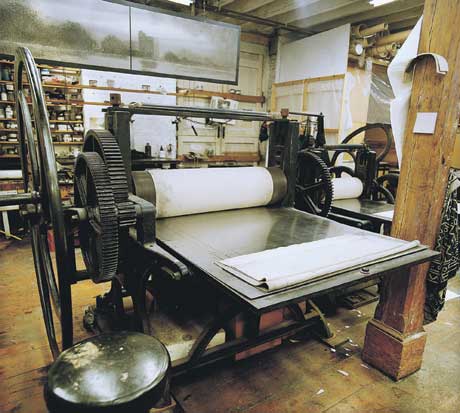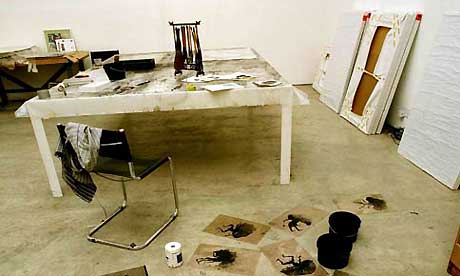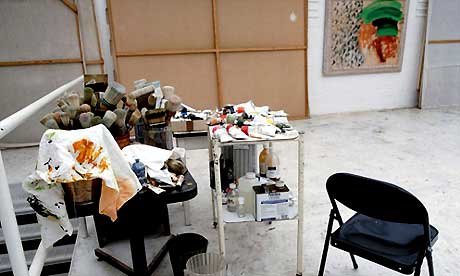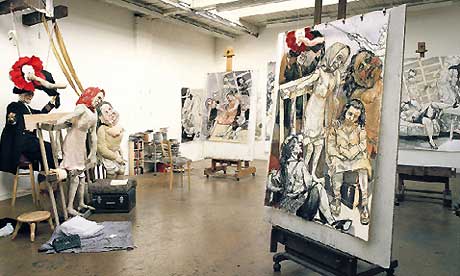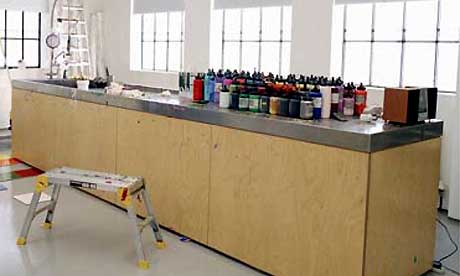The massive copperplate printing press was commissioned in 1900 to print the 3ft x 2ft etchings of the Welsh artist Frank Brangwyn, who was extremely popular at the turn of the century. It's a mangle-type press, which generates enormous pressure - pressing damp paper into the etched copperplate, to pick out the ink (the same process that's used to print bank notes). It was engineered in London's East End by Hughes and Kimber, who were among the finest etchings press manufacturers in the world. The fineness of adjustment and the beautiful balance and engineering make it a delight to work with. The shelves behind are full of pigments and oils to make the etching inks; I make a lot of my own inks, grinding them in myself.
Hanging up above is an etching on stainless steel of Oranmore Castle, in Galway Bay, a favourite place of mine. It's one of 20 of my images of the British coastline that make up a frieze on the outside of the new headquarters of Lazards Bank in Stratton Street behind Green Park underground in Piccadilly, London. I've long been drawn to the west coast of the British archipelago. It is also the west coast not only of Europe but of Asia. It is a confrontation with 3,000 miles of the Atlantic. Next year the Royal Academy of Arts is publishing a book of my etchings of the coast of the British Isles, along with 15 new poems by the Scottish writer Douglas Dunn.
The studio is on the ground floor of a four-storey former leather warehouse in the heart of the old leather district in Bermondsey (Tanner Street, Morocco Street), south London. I live on the top two floors. The beauty of living above the shop is that if I wake up at four in the morning, I can start work straight away. I get up early, and often work listening to Radio 4 or the World Service. I like the studio being very private: the windows are blocked up so no one can see me in here. The floor above has good windows, and on the top floor there's skylit north light, which is incredibly good for painting and watercolouring.
